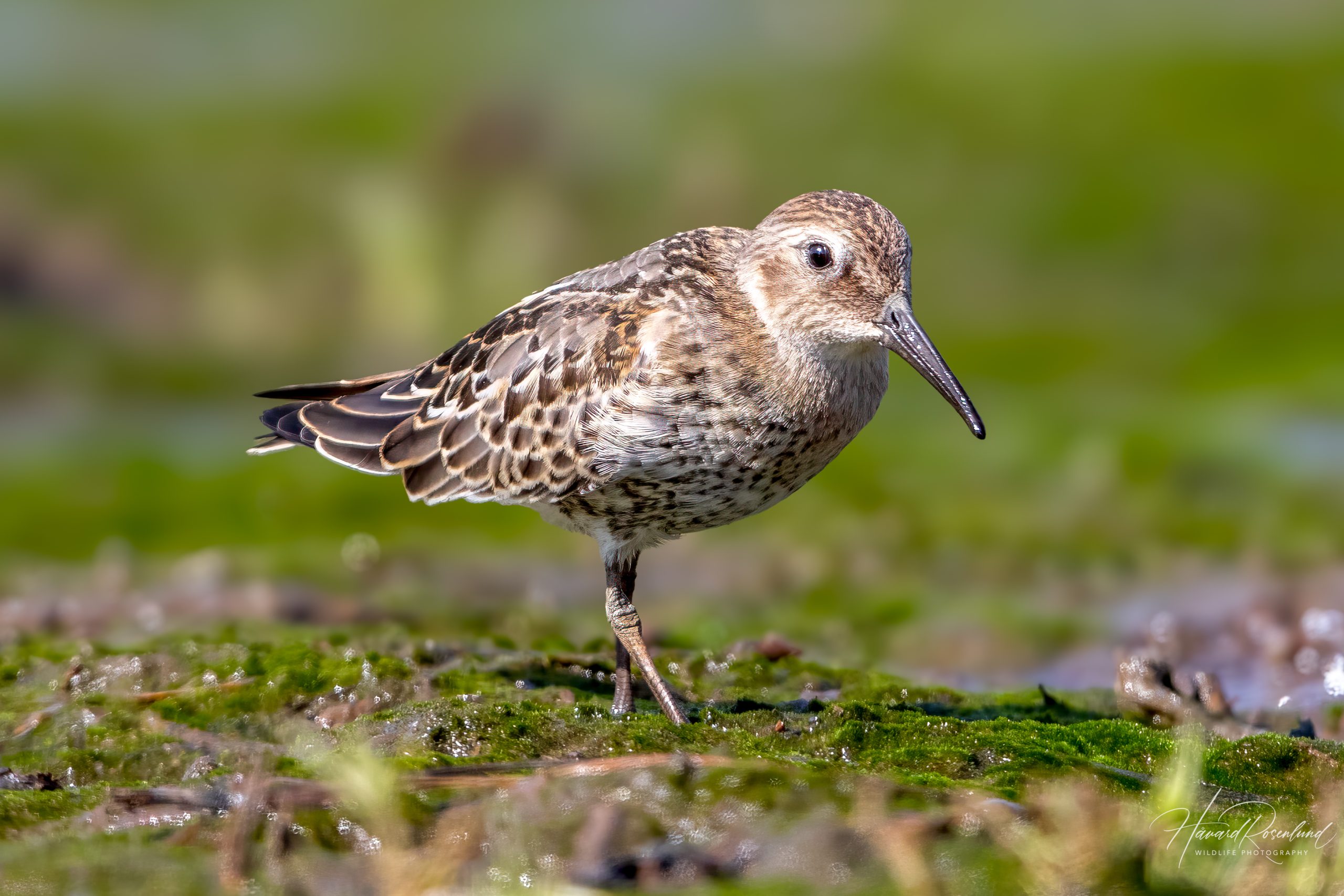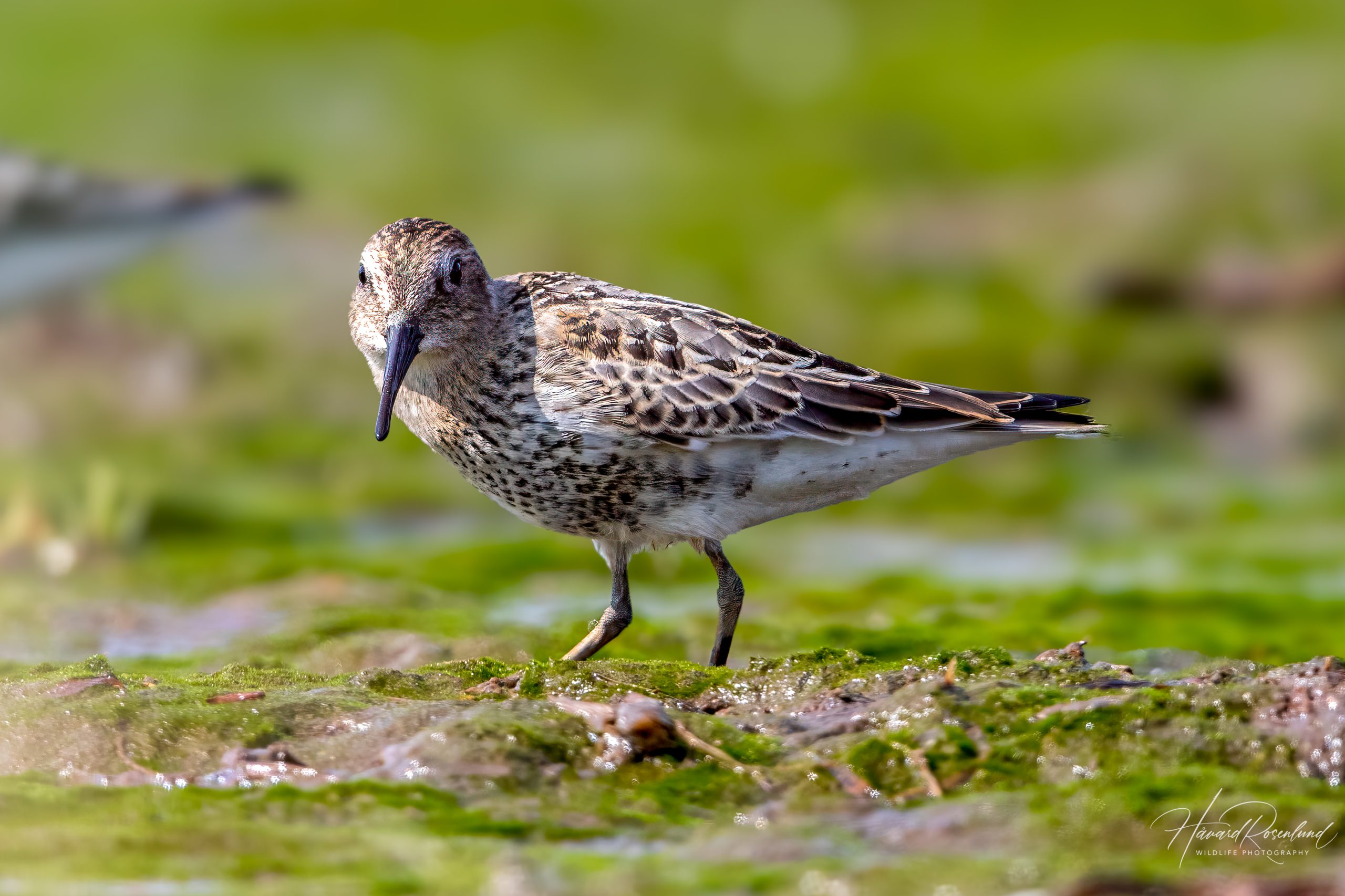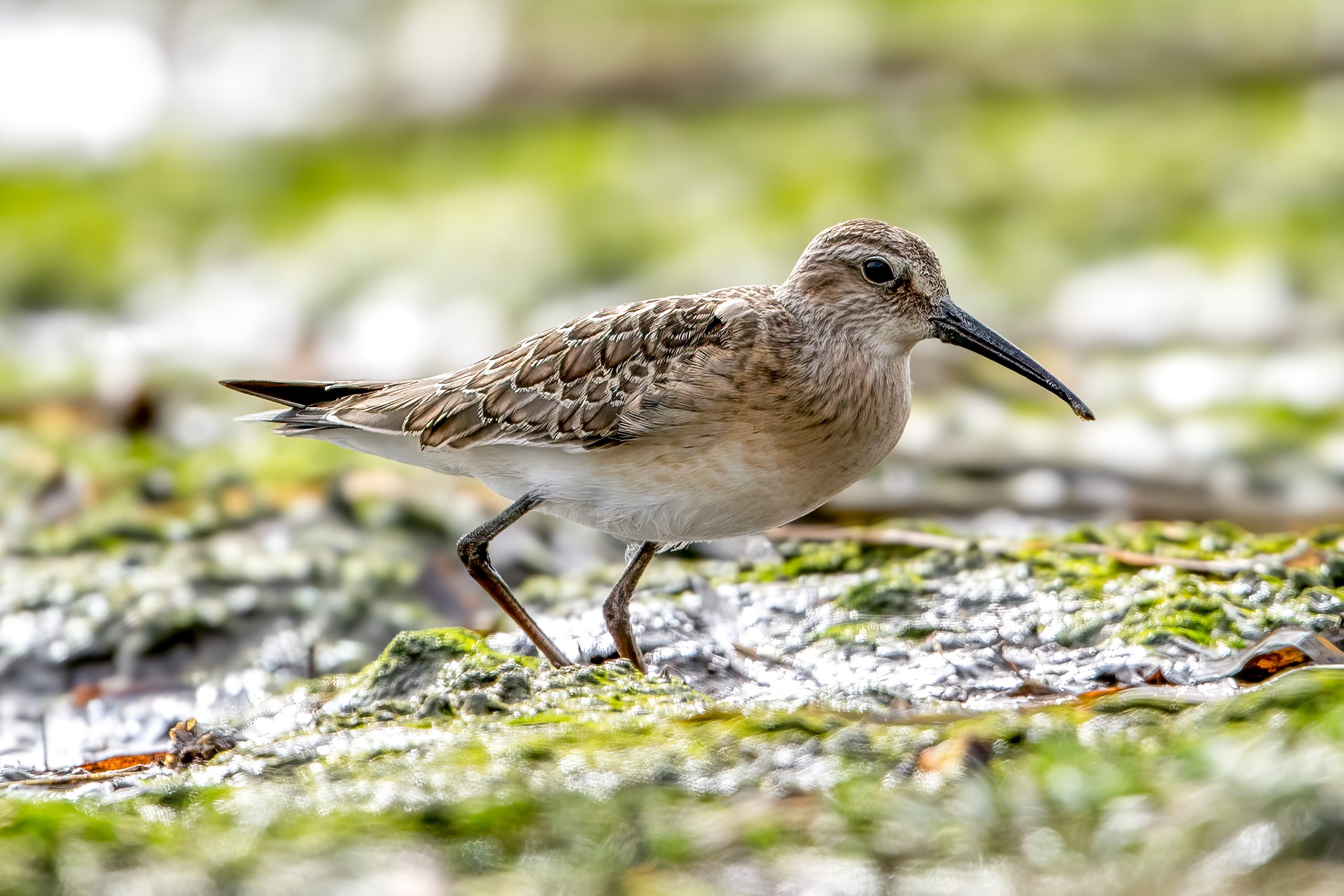Description
The dunlin (Calidris alpina) is a small, stout sandpiper found across a vast range spanning from the Arctic to temperate regions worldwide. Adult dunlins typically measure between 17-21 cm (6.7-8.3 in) in length with a wingspan of 32-36 cm (12.6-14.2 in), and they weigh around 40-50 grams (1.41-1.76 oz). They are easily recognizable by their distinctive black belly patch seen in breeding plumage, reddish-brown upperparts, and slightly downcurved bill. Outside the breeding season, dunlins have a more subdued appearance with greyish-brown upperparts and white underparts. They differ from similar species, such as the sanderling (Calidris alba), by their unique bill shape and breeding plumage coloration.
Diet & habitat
Dunlins inhabit coastal wetlands, mudflats, estuaries, and sandy shores, where they are often seen foraging for food. Their diet primarily consists of invertebrates such as insects, worms, mollusks, and crustaceans. Dunlins use a rapid pecking motion to probe the mud and sand with their sensitive bills, allowing them to detect and extract their prey efficiently. During migration and winter, they may also feed on seeds and other plant material found in their habitats.
Migration
Dunlins are highly migratory birds, traveling extensive distances between their breeding and wintering grounds. They breed in the high Arctic tundra and migrate southwards to spend the winter along the coasts of North America, Europe, Asia, and even reaching as far as Africa. The timing of their migration varies by population, but typically occurs in late summer and early autumn, with return migration happening in spring. Some dunlin populations undertake remarkable migrations of over 10,000 kilometers.
Nesting
The breeding season for dunlins begins in late May to early June. Male dunlins will then perform elaborate display flights and vocalizations to attract mates and defend their territories. This species nest in the Arctic tundra, preferring wet areas with low vegetation. Dunlins are ground-nesters, creating shallow scrapes lined with plant material. The female typically lays four eggs, which are incubated by both parents for about 20-24 days. Upon hatching, the chicks are precocial and leave the nest within hours, but remain under parental care. They fledge approximately 19-21 days after hatching, rapidly developing their foraging skills.
Status
The dunlin is currently listed as least concern by the IUCN Red List. However, certain populations are experiencing declines due to habitat loss, climate change, and human disturbances, especially in their breeding and wintering areas. Efforts to monitor and protect critical habitats are essential for the continued survival of this species.









